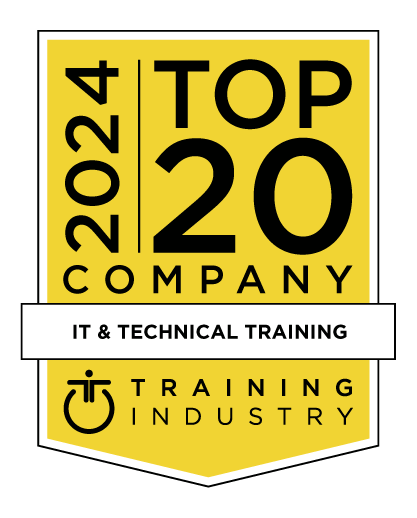title
Please take a moment to fill out this form. We will get back to you as soon as possible.
All fields marked with an asterisk (*) are mandatory.
Microsoft Dynamics 365 Supply Chain Management Functional Consultant Expert (beta)
Course Description
Overview
This exam measures your ability to accomplish the following technical tasks: configure products; configure production prerequisites; implement production methods; configure production control; and describe and implement additional supply chain management features.Passing score: 700
Objectives
Audience
- Candidates for this exam are expert or senior supply chain functional consultants who implement and configure advanced features of Dynamics 365 Supply Chain Management to meet the requirements of a business. They have an advanced knowledge of supply chain management operations, including production, logistics, master planning, and asset management. The candidate will identify use cases for applying mixed reality.
- Candidates analyze business requirements and translate those requirements into fully realized business processes and solutions and apply industry-recommended practices to implementations.
- Candidates demonstrate expertise in one or more of the following manufacturing methods: discrete, process, and lean. The candidate partners with architects, developers, consultants, and other stakeholders to implement solutions that meet or exceed the needs of their customers.
Topics
- Configure planning items, co-products, and by-products for batch orders
- Configure catch weight handling policies
- Configure inventory batches, batch attributes, and lot inheritance
- Manage product compliance including regulated and restricted items
- Define configuration groups and routes for dimension-based products
- Manage products with dimension-based, constraint-based, and pre-defined variants
- Configure bills of materials (BOMs), formulas, and routes to manage scrap
- Create and manage product configuration model components and subcomponents
- Create calculations for product configuration models
- Differentiate between table and expression constraints
- Configure BOM lines and route operations for a product configuration model
- Configure and manage pricing for configuration models
- Describe the purpose and capabilities of the product configurator
- Validate, approve, and test product configuration models
- Design an engineering product lifecycle
- Configure engineering categories
- Configure product readiness policies and product release policies
- Create an engineering product with engineering attributes
- Review and accept released products to a local company
- Add engineering products to a sales order, purchase orders and production orders
- Schedule and implement engineering change requests and change orders
- Implement and manage work calendars and working time
- Create and configure resource capabilities
- Implement and manage resources and resource groups
- Create and manage operations and routes
- Create production units, production groups, production pools, and production journal names
- Describe integration between general ledger and production control modules
- Manage reservations in production process, including partial reservations and re-reservations
- Configure warehouse processes for raw materials picking and finished goods put away
- Describe unified (mixed mode) manufacturing
- Configure production control parameters
- Describe production and batch order process statuses
- Configure costing sheets and indirect costs
- Configure and manage cost groups, costing versions, and cost categories
- Configure cost allocations for co-products and burden allocation for by-products
- Configure and perform BOM/formula calculations
- Activate item prices
- Describe production posting profiles
- Describe common sources of production variances
- View and analyze production and inventory costs
- Create BOM and item configurations
- Create and process production orders
- Create and process picking list journals
- Create and process job card and route card journals
- Create and process reports as finished journals
- Reset the status of a production order
- Describe use cases and configure production-related reservations
- Configure batch reservations and release to warehouse process
- Configure consolidated batch order processes
- Manage batch balancing and batch order sequencing
- Configure formulas features
- Create and process report as finished journals with co-products and by-products
- Create and process batch orders and a rework batch order
- Create formulas and formula versions
- Create value streams and production flows
- Configure production flow costing
- Create kanban rules
- Process kanban orders by using kanban boards
- Create and manage fixed, scheduled, and event kanbans
- Describe use cases for subcontracting processes
- Implement activity-based subcontracting
- Configure BOM and formula lines, resources, and routes for subcontracting items
- Create service items for subcontracting
- Create and process subcontracting purchase orders
- Configure time and attendance prerequisites and activate workers for time registration
- Identify the capabilities of manufacturing execution
- Process production and batch orders by using manufacturing execution processes
- Configure production floor execution interface and job card terminals
- Calculate and approve time registrations
- Process and view planned orders
- Configure intercompany master planning
- Configure forecast models and parameters
- Run demand forecasting and adjust as appropriate
- Execute explosion and validate results
- Describe how supply chain calendars affect master planning
- Define scheduling parameters
- View, monitor, and update production schedules
- Configure capacity for production resources including machines, labor, and tooling
- Describe infinite and finite scheduling and capacity
- Describe differences between operations and job scheduling
- Describe the value proposition for scale units for warehouse workloads
- Describe warehouse management processes that can run on a scale unit
- Describe manufacturing processes that can run on a scale unit
- Describe use cases for Dynamics 365 Guides
- Describe the process for integrating mixed reality Dynamics 365 Guides with manufacturing processes
- Describe the process for integrating mixed reality Dynamics 365 Guides with asset management
- Configure maintenance plans
- Configure functional locations
- Manage maintenance requests
- Manage work orders consumption
- Manage work order scheduling
Related Courses
-
Designing and Implementing a Microsoft Azure AI Solution
LQEX-MOC-AI-102- Duration: 1
- Delivery Format: Exam Vouchers
- Price: 165.00 USD
-
Microsoft Azure AI Fundamentals
LQEX-MOC-AI-900- Duration: 1
- Delivery Format: Exam Vouchers
- Price: 99.00 USD
Self-Paced Training Info
Learn at your own pace with anytime, anywhere training
- Same in-demand topics as instructor-led public and private classes.
- Standalone learning or supplemental reinforcement.
- e-Learning content varies by course and technology.
- View the Self-Paced version of this outline and what is included in the SPVC course.
- Learn more about e-Learning
Course Added To Shopping Cart
bla
bla
bla
bla
bla
bla
Exam Terms & Conditions
ONCE YOU PURCHASE THIS EXAM YOU WILL NOT BE ABLE TO CANCEL YOUR ORDER. You are billed for the course after hitting submit. Exams are non-refundable.
Vouchers expire 12 months from the date they are issued, unless otherwise specified in the terms and conditions. Voucher expiration dates cannot be extended. All sales are final.Please refer to the full terms and conditions here.
Exam Terms & Conditions
Sorry, there are no classes that meet your criteria.
Please contact us to schedule a class.

STOP! Before You Leave
Save 0% on this course!
Take advantage of our online-only offer & save 0% on any course !
Promo Code skip0 will be applied to your registration
Purchase Information
title
Please take a moment to fill out this form. We will get back to you as soon as possible.
All fields marked with an asterisk (*) are mandatory.










